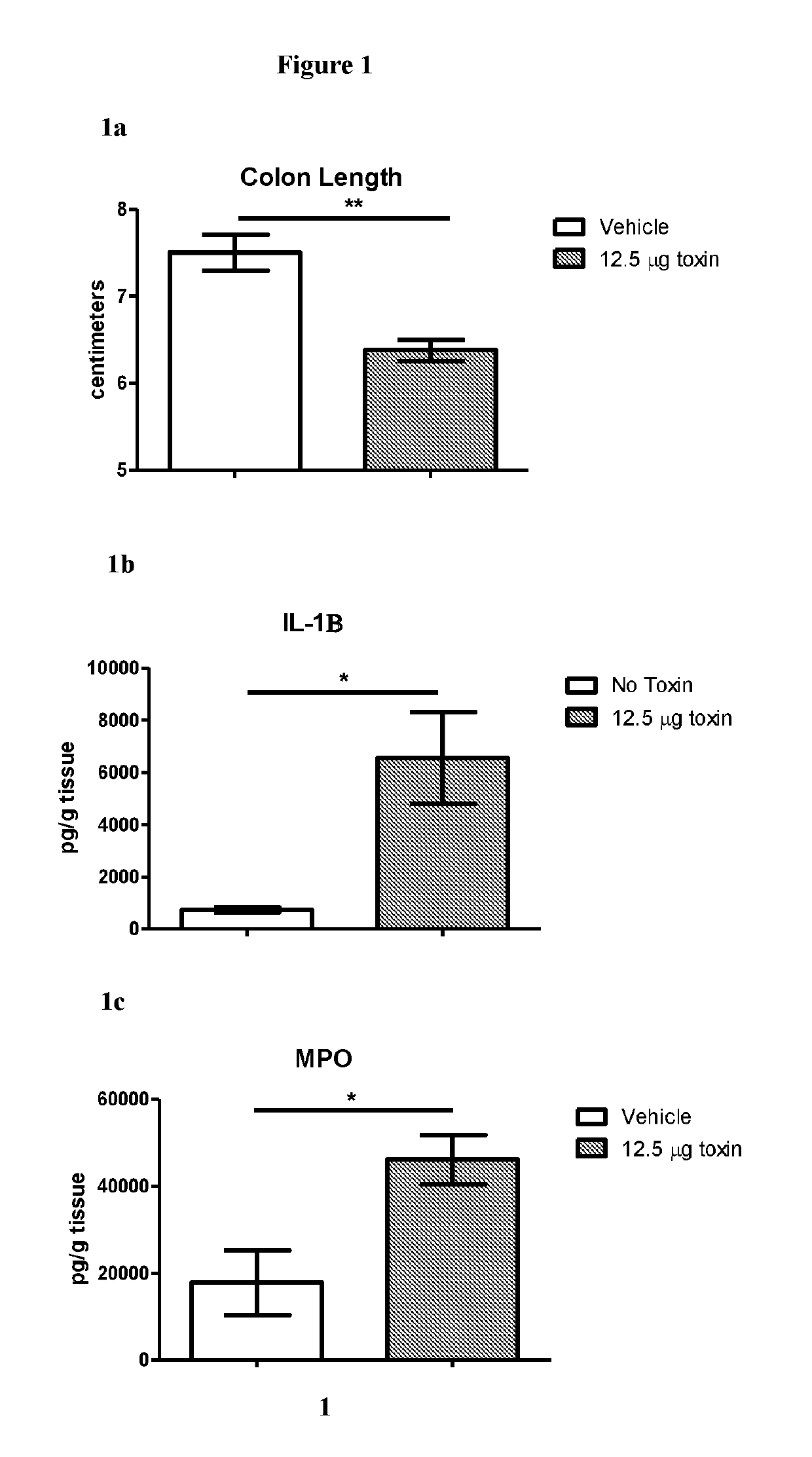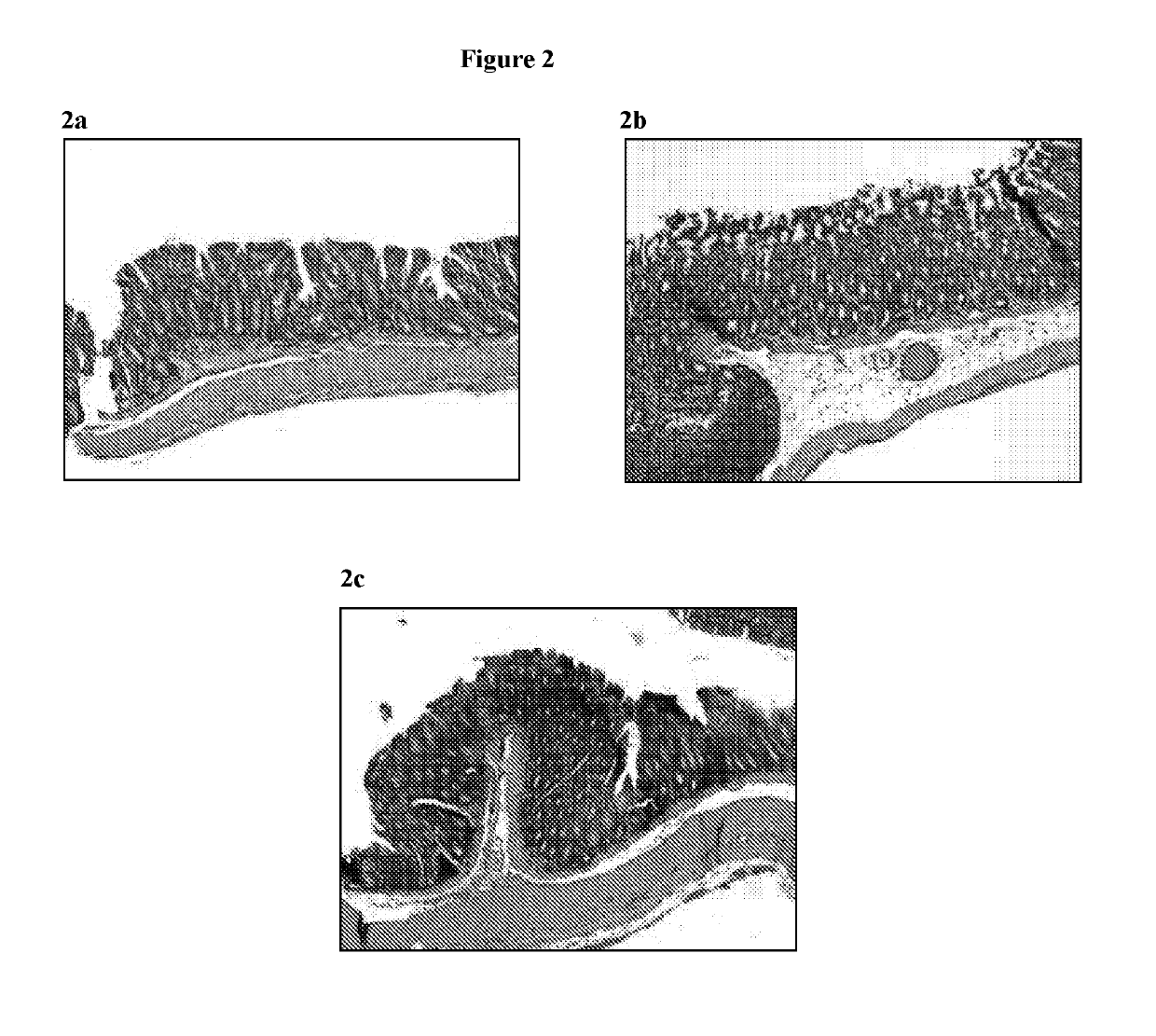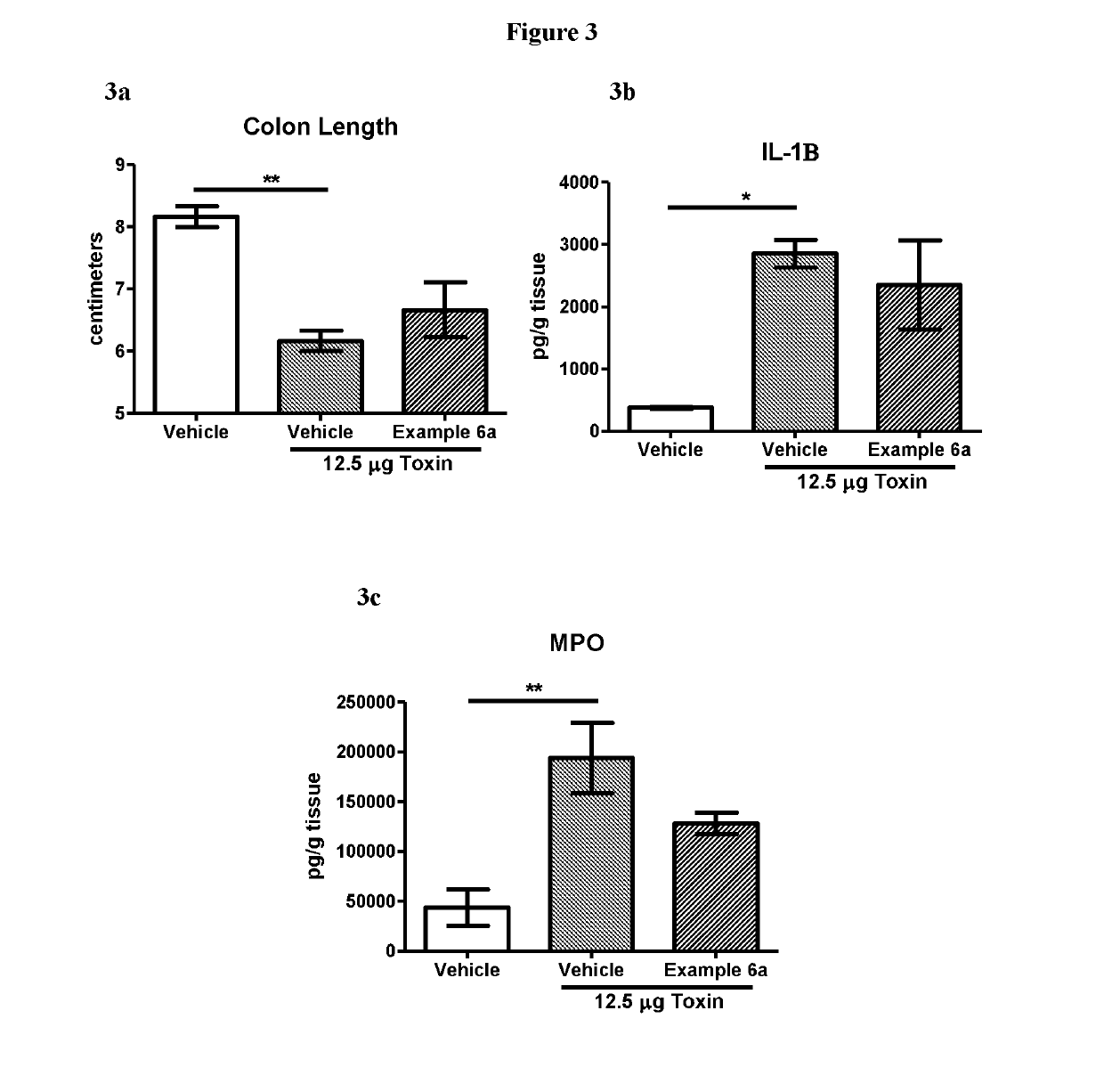Novel Clostridium Difficile Toxin Inhibitors
a technology of clostridium difficile and toxin inhibitor, which is applied in the field of new benzodiazepine derivatives, can solve the problems of high cost of monoclonal antibody, inability to achieve clinical application in non-human subjects, and inability to achieve clinical application
- Summary
- Abstract
- Description
- Claims
- Application Information
AI Technical Summary
Benefits of technology
Problems solved by technology
Method used
Image
Examples
example 1a
(R)-4-((8-Chloro-2,5-dioxo-3-(pyridin-2-ylmethyl)-2,3-dihydro-1H-benzo[e][1,4]diazepin-4(5H)-yl)methyl)benzoic Acid
Step 1: (R)-Methyl 4-(((1-methoxy-1-oxo-3-(pyridin-2-yl)propan-2-yl)amino)methyl)benzoate (1-1)
[0354]
[0355]To a suspension of Intermediate II.2 (2.0 g, 8.5 mmol) in MeOH (40 mL) was added triethylamine (2.4 mL, 17 mmol) followed by methyl-4-formylbenzoate (1.4 g, 8.6 mmol). The resulting mixture was stirred at 23° C. for 45 min. Sodium cyanoborohydride (0.54 g, 8.5 mmol) was added followed by acetic acid (0.97 mL, 17 mmol). The reaction mixture was stirred at 23° C. for 16 h. The mixture was concentrated in vacuo, and the crude residue was taken up in EtOAc (100 mL), and washed with 1 N NaOH (aq) (1×100 mL). The aqueous phase was then extracted with EtOAC (2×100 mL). The combined organic extracts were washed with brine (1×100 mL), dried (Na2SO4), filtered, and concentrated in vacuo. The crude residue was purified by FCC (SiO2; elution with 0-100% EtOAc / hexanes) to provi...
example 2a
(R)-4-((8-Chloro-2,5-dioxo-3-(pyridin-3-ylmethyl)-2,3-dihydro-1H-benzo[e][1,4]diazepin-4(5H)-yl)methyl)benzoic Acid
Step 1: Resin-Bound Fmoc Protected amine 2-1
[0366]
[0367]To a solution of Fmoc-3-pyridyl-D-Ala-OH (1.3 g, 3.4 mmol) in DMA (30 mL) in a 100 mL capacity solid-phase synthesis reaction vessel, was added 2,6-dichlorobenzoylchloride (1.9 mL, 14 mmol) followed by pyridine (1.8 mL, 23 mmol). The reaction mixture was shaken on a wrist action shaking apparatus for 30 min. Wang Resin (0.75 g, 2.3 mmol, HS, 100-200 mesh, 1% DVB, 3 mmol / g loading) was added and the reaction mixture was shaken for 16 h. The reaction vessel was drained, and the resin was washed successively with 3×30 mL each of DMF, MeOH, and DCM. The resin was then dried in vacuo to provide resin-bound Fmoc-protected amine 2-1.
Step 2: Resin-Bound amine 2-2
[0368]
[0369]To the resin-bound Fmoc protected amine 2-1 was added 30% piperidine / DMF (45 mL). The reaction mixture was shaken on a wrist action shaking apparatus f...
example 3a
(R)-4-((3-Benzyl-8-chloro-2,5-dioxo-2,3-dihydro-1H-benzo[e][1,4]diazepin-4(5H)-yl)methyl)benzoic Acid
Step 1: Resin-Bound aldehyde 3-1
[0379]
[0380]To a solution of 4-carboxybenzaldehyde (6.75 g, 45.0 mmol) in DMA (150 mL) was added pyridine (23.7 g, 300 mmol) followed by 2,6-dichlorobenzoyl chloride (37.7 g, 180 mmol). The reaction mixture was stirred at 23° C. for 1 h. Wang resin (10.0 g, 30.0 mmol, HS, 100-200 mesh, 1% DVB, 3 mmol / g loading) was then added, and the mixture was stirred at 23° C. gently for 20 h. The resin was filtered, washed with dimethylacetamide (3×), and then washed alternately with methanol (3×) and DCM (3×). The resin was then dried in vacuo. The above procedure was repeated a second time to provide resin-bound aldehyde 3-1.
Step 2: Resin-Bound Secondary amine 3-2
[0381]
[0382]To (R)-methyl 2-amino-3-phenylpropanoate hydrochloride (Intermediate II.6) in 2% AcOH / DMF (20 mL) was added triethylamine (0.65 g, 6.4 mmol). The mixture was then agitated on an orbital shak...
PUM
 Login to View More
Login to View More Abstract
Description
Claims
Application Information
 Login to View More
Login to View More - R&D
- Intellectual Property
- Life Sciences
- Materials
- Tech Scout
- Unparalleled Data Quality
- Higher Quality Content
- 60% Fewer Hallucinations
Browse by: Latest US Patents, China's latest patents, Technical Efficacy Thesaurus, Application Domain, Technology Topic, Popular Technical Reports.
© 2025 PatSnap. All rights reserved.Legal|Privacy policy|Modern Slavery Act Transparency Statement|Sitemap|About US| Contact US: help@patsnap.com



